A Machine Learning Approach for Predicting Black Hole Mass in Blazars Using Broadband Emission Model Parameters
Abstract
1. Introduction
2. Broadband Emission from Blazars
3. The Data Sample of Blazars
4. Machine Learning Algorithms
4.1. Linear Regression
4.2. Support Vector Machine
4.3. Adaptive Boosting
4.4. Bagging
4.5. Gradient Boosting
4.6. Random Forest
5. Results and Discussion
6. Conclusions
- Blazars, being bright sources across the electromagnetic spectrum, are visible over large cosmological distances. Therefore, the physical properties of the central SMBHs are important in mapping the structure formation and evolution in the early universe.
- The best fit parameters of the blazar SEDs, derived under the framework of a simple, homogeneous, one-zone leptonic emission model, can be effectively utilized to estimate the mass of SMBHs in blazars.
- Out of the six machine learning algorithms used in this work, AdaBoost, SVM, bagging, and random forest are found to give consistent performance for predicting the mass of SMBH using broadband SED model parameters as inputs.
- A very strong linear correlation is observed between the predicted and desired masses of the SMBHs for the blazar sample used in the present work. The predictions by different machine learning algorithms have very good accuracy.
- Among the several model parameters for blazar emission, location of emission zone from the central region and bulk Lorentz factor of the jet are the crucial parameters for predicting the mass of SMBH. However, more future multi-wavelength observations of blazars are needed to further confirm and validate the findings of this work as the central black hole mass is the driving parameter of the blazar activities.
Author Contributions
Funding
Data Availability Statement
Acknowledgments
Conflicts of Interest
References
- Kauffmann, G.; Haehnelt, M. A unified model for the evolution of galaxies and quasars. Mon. Not. R. Astron. Soc. 2000, 311, 576–588. [Google Scholar] [CrossRef]
- Urry, C.M.; Padovani, P. Unified Schemes for Radio-Loud Active Galactic Nuclei. Publ. Astron. Soc. Pac. 1995, 107, 803. [Google Scholar] [CrossRef]
- Netzer, H. Revisiting the Unified Model of Active Galactic Nuclei. Annu. Rev. Astron. Astrophys. 2015, 53, 365–408. [Google Scholar] [CrossRef]
- Padovani, P.; Alexander, D.M.; Assef, R.J.; De Marco, B.; Giommi, P.; Hickox, R.C.; Richards, G.T.; Smolčić, V.; Hatziminaoglou, E.; Mainieri, V.; et al. Active galactic nuclei: What’s in a name? Astron. Astrophys. Rev. 2017, 25, 2. [Google Scholar] [CrossRef]
- Fabian, A.C. Observational Evidence of Active Galactic Nuclei Feedback. Annu. Rev. Astron. Astrophys. 2012, 50, 455–489. [Google Scholar] [CrossRef]
- Blandford, R.D.; Znajek, R.L. Electromagnetic extraction of energy from Kerr black holes. Mon. Not. R. Astron. Soc. 1977, 179, 433–456. [Google Scholar] [CrossRef]
- Doeleman, S.S.; Fish, V.L.; Schenck, D.E.; Beaudoin, C.; Blundell, R.; Bower, G.C.; Broderick, A.E.; Chamberlin, R.; Freund, R.; Friberg, P.; et al. Jet-Launching Structure Resolved Near the Supermassive Black Hole in M87. Science 2012, 338, 355–358. [Google Scholar] [CrossRef]
- Blandford, R.; Meier, D.; Readhead, A. Relativistic Jets from Active Galactic Nuclei. Annu. Rev. Astron. Astrophys. 2019, 57, 467–509. [Google Scholar] [CrossRef]
- Goldreich, P.; Julian, W.H. Pulsar Electrodynamics. Astrophys. J. 1969, 157, 869. [Google Scholar] [CrossRef]
- Blandford, R.D.; Payne, D.G. Hydromagnetic flows from accretion disks and the production of radio jets. Mon. Not. R. Astron. Soc. 1982, 199, 883–903. [Google Scholar] [CrossRef]
- Lynden-Bell, D. Magnetic collimation by accretion discs of quasars and stars. Mon. Not. R. Astron. Soc. 1996, 279, 389–401. [Google Scholar] [CrossRef]
- Böttcher, M. Progress in Multi-wavelength and Multi-Messenger Observations of Blazars and Theoretical Challenges. Galaxies 2019, 7, 20. [Google Scholar] [CrossRef]
- Singh, K.K.; Meintjes, P.J. Characterization of variability in blazar light curves. Astron. Nachrichten 2020, 341, 713–725. [Google Scholar] [CrossRef]
- Singh, K.K.; Meintjes, P.J.; van Soelen, B.; Ramamonjisoa, F.A.; Vaidya, B. Optical polarization properties of February 2010 outburst of the blazar Mrk 421. Astrophys. Space Sci. 2019, 364, 88. [Google Scholar] [CrossRef]
- Peterson, B.M. Measuring the Masses of Supermassive Black Holes. Space Sci. Rev. 2014, 183, 253–275. [Google Scholar] [CrossRef]
- Krolik, J.H.; Horne, K.; Kallman, T.; Malkan, M.A.; Edelson, R.A.; Kriss, G. Ultraviolet Variability of NGC 5548: Dynamics of the Continuum Production Region and Geometry of the Broad-Line Region. Astrophys. J. 1991, 371, 541. [Google Scholar] [CrossRef]
- Wandel, A.; Peterson, B.M.; Malkan, M.A. Central Masses and Broad-Line Region Sizes of Active Galactic Nuclei. I. Comparing the Photoionization and Reverberation Techniques. Astrophys. J. 1999, 526, 579. [Google Scholar] [CrossRef]
- Krolik, J.H. Systematic Errors in the Estimation of Black Hole Masses by Reverberation Mapping. Astrophys. J. 2001, 551, 72. [Google Scholar] [CrossRef]
- Peterson, B.M. Reverberation Mapping of Active Galactic Nuclei. Publ. Astron. Soc. Pac. 1993, 105, 247. [Google Scholar] [CrossRef]
- Kaspi, S.; Smith, P.S.; Netzer, H.; Maoz, D.; Jannuzi, B.; Giveon, U. Reverberation Measurements for 17 Quasars and the Size-Mass-Luminosity Relations in Active Galactic Nuclei. Astrophys. J. 2000, 533, 631. [Google Scholar] [CrossRef]
- Vestergaard, M. Determining Central Black Hole Masses in Distant Active Galaxies. Astrophys. J. 2002, 571, 733. [Google Scholar] [CrossRef]
- Foschini, L. What We Talk about When We Talk about Blazars. Front. Astron. Space Sci. 2017, 4, 6. [Google Scholar] [CrossRef]
- Plotkin, R.M.; Markoff, S.; Trager, S.C.; Anderson, S.F. Dynamical black hole masses of BL Lac objects from the Sloan Digital Sky Survey. Mon. Not. R. Astron. Soc. 2011, 413, 805–812. [Google Scholar] [CrossRef][Green Version]
- Ferrarese, L.; Merritt, D. A Fundamental Relation between Supermassive Black Holes and Their Host Galaxies. Astrophys. J. 2000, 539, L9–L12. [Google Scholar] [CrossRef]
- Gebhardt, K.; Bender, R.; Bower, G.; Dressler, A.; Faber, S.M.; Filippenko, A.V.; Green, R.; Grillmair, C.; Ho, L.C.; Kormendy, J.; et al. A Relationship between Nuclear Black Hole Mass and Galaxy Velocity Dispersion. Astrophys. J. 2000, 539, L13. [Google Scholar] [CrossRef]
- Tremaine, S.; Gebhardt, K.; Bender, R.; Bower, G.; Dressler, A.; Faber, S.M.; Filippenko, A.V.; Green, R.; Grillmair, C.; Ho, L.C.; et al. The Slope of the Black Hole Mass versus Velocity Dispersion Correlation. Astrophys. J. 2002, 574, 740–753. [Google Scholar] [CrossRef]
- Shen, Y. The Sloan Digital Sky Survey Reverberation Mapping Project: No Evidence for Evolution in the M• -σ* Relation to z∼ 1. Astrophys. J. 2015, 805, 96. [Google Scholar] [CrossRef]
- Xu, Y.; Cao, X.; Wu, Q. On the BL Lacertae Objects/Radio Quasars and the FR I/II Dichotomy. Astrophys. J. 2009, 694, L107–L110. [Google Scholar] [CrossRef]
- Lu, Y.; Yu, Q. The relationship between X-ray variability and the central black hole mass. Mon. Not. R. Astron. Soc. 2001, 324, 653–658. [Google Scholar] [CrossRef]
- O’Neill, P.M.; Nandra, K.; Papadakis, I.E.; Turner, T.J. The relationship between X-ray variability amplitude and black hole mass in active galactic nuclei. Mon. Not. R. Astron. Soc. 2005, 358, 1405–1416. [Google Scholar] [CrossRef]
- Shemmer, O.; Brandt, W.N.; Netzer, H.; Maiolino, R.; Kaspi, S. The Hard X-ray Spectrum as a Probe for Black Hole Growth in Radio-Quiet Active Galactic Nuclei. Astrophys. J. 2008, 682, 81–93. [Google Scholar] [CrossRef]
- Gu, M.; Cao, X. The anticorrelation between the hard X-ray photon index and the Eddington ratio in low-luminosity active galactic nuclei. Mon. Not. R. Astron. Soc. 2009, 399, 349–356. [Google Scholar] [CrossRef]
- Mayers, J.A.; Romer, K.; Fahari, A.; Stott, J.P.; Giles, P.; Rooney, P.J.; Bermeo-Hernandez, A.; Collins, C.A.; Hilton, M.; Hoyle, B.; et al. Correlations between X-ray properties and Black Hole Mass in AGN: Towards a new method to estimate black hole mass from short exposure X-ray observations. arXiv 2018, arXiv:1803.06891. [Google Scholar]
- Gupta, S.P.; Pandey, U.; Singh, K.; Rani, B.; Pan, J.; Fan, J.; Gupta, A. Optical intra-day variability timescales and black hole mass of the blazars. New Astron. 2012, 17, 8–17. [Google Scholar] [CrossRef]
- Zhang, Z.; Gupta, A.C.; Gaur, H.; Wiita, P.J.; An, T.; Gu, M.; Hu, D.; Xu, H. X-ray Intraday Variability of the TeV Blazar Mrk 421 with Suzaku. Astrophys. J. 2019, 884, 125. [Google Scholar] [CrossRef]
- Savić, D.V.; Popović, L.; Shablovinskaya, E. The First Supermassive Black Hole Mass Measurement in Active Galactic Nuclei Using the Polarization of Broad Emission Line Mg II. Astrophys. J. 2021, 921, L21. [Google Scholar] [CrossRef]
- Ghisellini, G.; Tavecchio, F. Canonical high-power blazars. Mon. Not. R. Astron. Soc. 2009, 397, 985–1002. [Google Scholar] [CrossRef]
- Singh, K.K.; Meintjes, P.J.; Ramamonjisoa, F.A. Understanding the giant gamma-ray outburst on June 16, 2015 from the blazar 3C 279. Astrophys. Space Sci. 2020, 365, 33. [Google Scholar] [CrossRef]
- Dermer, C.D. On the Beaming Statistics of Gamma-ray Sources. Astrophys. J. 2020, 446, L63. [Google Scholar] [CrossRef]
- Böttcher, M. Modeling the emission processes in blazars. Astrophys. Space Sci. 2007, 309, 95–104. [Google Scholar] [CrossRef]
- Maraschi, L.; Ghisellini, G.; Celotti, A. A Jet Model for the Gamma-ray—Emitting Blazar 3C 279. Astrophys. J. 1992, 397, L5. [Google Scholar] [CrossRef]
- Tavecchio, F.; Maraschi, L.; Ghisellini, G. Constraints on the Physical Parameters of TeV Blazars. Astrophys. J. 1998, 509, 608–619. [Google Scholar] [CrossRef]
- Dermer, C.D.; Schlickeiser, R. Model for the High-Energy Emission from Blazars. Astrophys. J. 1993, 416, 458. [Google Scholar] [CrossRef]
- Sikora, M.; Begelman, M.C.; Rees, M.J. Comptonization of Diffuse Ambient Radiation by a Relativistic Jet: The Source of Gamma rays from Blazars? Astrophys. J. 1994, 421, 153. [Google Scholar] [CrossRef]
- Fan, Z.; Cao, X.; Gu, M. A Test of External Compton Models for Gamma-ray Active Galactic Nuclei. Astrophys. J. 2006, 646, 8–15. [Google Scholar] [CrossRef]
- Arbeiter, C.; Pohl, M.; Schlickeiser, R. The influence of dust on the inverse Compton emission from jets in Active Galactic Nuclei. Astron. Astrophys. 2002, 386, 415–426. [Google Scholar] [CrossRef]
- Sokolov, A.; Marscher, A.P. External Compton Radiation from Rapid Nonthermal Flares in Blazars. Astrophys. J. 2005, 629, 52–60. [Google Scholar] [CrossRef]
- Ghisellini, G.; Tavecchio, F.; Foschini, L.; Ghirlanda, G.; Maraschi, L.; Celotti, A. General physical properties of bright Fermi blazars. Mon. Not. R. Astron. Soc. 2010, 402, 497–518. [Google Scholar] [CrossRef]
- Baron, D. Machine Learning in Astronomy: A practical overview. arXiv 2019, arXiv:1904.07248. [Google Scholar]
- Singh, K.K.; Dhar, V.K.; Meintjes, P.J. An artificial intelligence based approach for constraining the redshift of blazars using γ-ray observations. Exp. Astron. 2019, 48, 297–311. [Google Scholar] [CrossRef]
- Singh, K.K.; Dhar, V.; Meintjes, P. Artificial neural networks for cosmic gamma-ray propagation in the universe. New Astron. 2022, 91, 101701. [Google Scholar] [CrossRef]
- Breiman, L. Bagging Predictors. Mach. Learn. 1996, 24, 123–140. [Google Scholar] [CrossRef]
- Breiman, L. Greedy Function Approximation: A Gradient Boosting Machine. Ann. Stat. 2001, 29, 5. [Google Scholar]
- Breiman, L. Random Forests. Mach. Learn. 2001, 45, 5–32. [Google Scholar] [CrossRef]
- Tolamatti, A.; Ghosal, B.; Singh, K.; Bhattacharyya, S.; Bhatt, N.; Yadav, K.; Chandra, P.; Das, M.; Tickoo, A.; Rannot, R.; et al. Long-term multi-wavelength study of temporal and spectral properties of 3C 279. Astropart. Phys. 2022, 139, 102687. [Google Scholar] [CrossRef]
- Valtaoja, E.; Lindfors, E.; Saloranta, P.M.; Hovatta, T.; Lähteenmäki, A.; Nieppola, E.; Torniainen, I.; Tornikoski, M. Hydrodynamics of Small-Scale Jets: Observational Aspects. ASP Conf. Ser. 2008, 386, 388–397. [Google Scholar]
- Chen, Y.; Gu, Q.; Fan, J.; Zhou, H.; Yuan, Y.; Gu, W.; Wu, Q.; Xiong, D.; Guo, X.; Ding, N.; et al. The Powers of Relativistic Jets Depend on the Spin of Accreting Supermassive Black Holes. Astrophys. J. 2021, 913, 93. [Google Scholar] [CrossRef]
- Zhou, M.; Cao, X.-W. The relation between black hole masses and Lorentz factors of the jet components in blazars. Res. Astron. Astrophys. 2009, 9, 293. [Google Scholar] [CrossRef]
- Begelman, M.C.; Fabian, A.C.; Rees, M.J. Implications of very rapid TeV variability in blazars. Mon. Not. R. Astron. Soc. 2008, 384, L19–L23. [Google Scholar] [CrossRef]
- Costamante, L.; Bonnoli, G.; Tavecchio, F.; Ghisellini, G.; Tagliaferri, G.; Khangulyan, D. The NuSTAR view on hard-TeV BL Lacs. Mon. Not. R. Astron. Soc. 2018, 477, 4257–4268. [Google Scholar] [CrossRef]
- Krawczynski, H.; Hughes, S.B.; Horan, D.; Aharonian, F.; Aller, M.F.; Aller, H.; Boltwood, P.; Buckley, J.; Coppi, P.; Fossati, G.; et al. Multiwavelength Observations of Strong Flares from the TeV Blazar 1ES 1959+650. Astrophys. J. 2004, 601, 151–164. [Google Scholar] [CrossRef]
- Singh, K.K.; Sahayanathan, S.; Sinha, A.; Bhatt, N.; Tickoo, A.; Yadav, K.; Rannot, R.; Chandra, P.; Venugopal, K.; Marandi, P.; et al. A time dependent approach to model X-ray and γ-ray light curves of Mrk 421 observed during the flare in February 2010. New Astron. 2017, 54, 24–29. [Google Scholar] [CrossRef][Green Version]
- Singh, K.K.; Meintjes, P.; Bisschoff, B.; Ramamonjisoa, F.; van Soelen, B. Gamma-ray and optical properties of the flat spectrum radio quasar 3C 279 flare in June 2015. J. High Energy Astrophys. 2020, 26, 65–67. [Google Scholar] [CrossRef]
- Bissok, M. et al. [IceCube Collaboration]. Evidence for High-Energy Extraterrestrial Neutrinos at the IceCube Detector. Science 2013, 342, 1242856. [Google Scholar]
- Aartsen, M.G.; Ackermann, M.; Adams, J.; Aguilar, J.A.; Ahlers, M.; Ahrens, M.; Alispach, C.; Andeen, K.; Anderson, T.; Ansseau, I.; et al. Characteristics of the Diffuse Astrophysical Electron and Tau Neutrino Flux with Six Years of IceCube High Energy Cascade Data. Phys. Rev. Lett. 2020, 125, 121104. [Google Scholar] [CrossRef]
- Joshi, M.; Böttcher, M. Time-dependent Radiation Transfer in the Internal Shock Model Scenario for Blazar Jets. Astrophys. J. 2011, 727, 21. [Google Scholar] [CrossRef]
- Shukla, A.; Chitnis, V.R.; Singh, B.B.; Acharya, B.S.; Anupama, G.C.; Bhattacharjee, P.; Britto, R.J.; Mannheim, K.; Prabhu, T.; Saha, L.; et al. Multi-frequency, Multi-epoch Study of Mrk 501: Hints for a Two-component Nature of the Emission. Astrophys. J. 2015, 798, 2. [Google Scholar] [CrossRef]
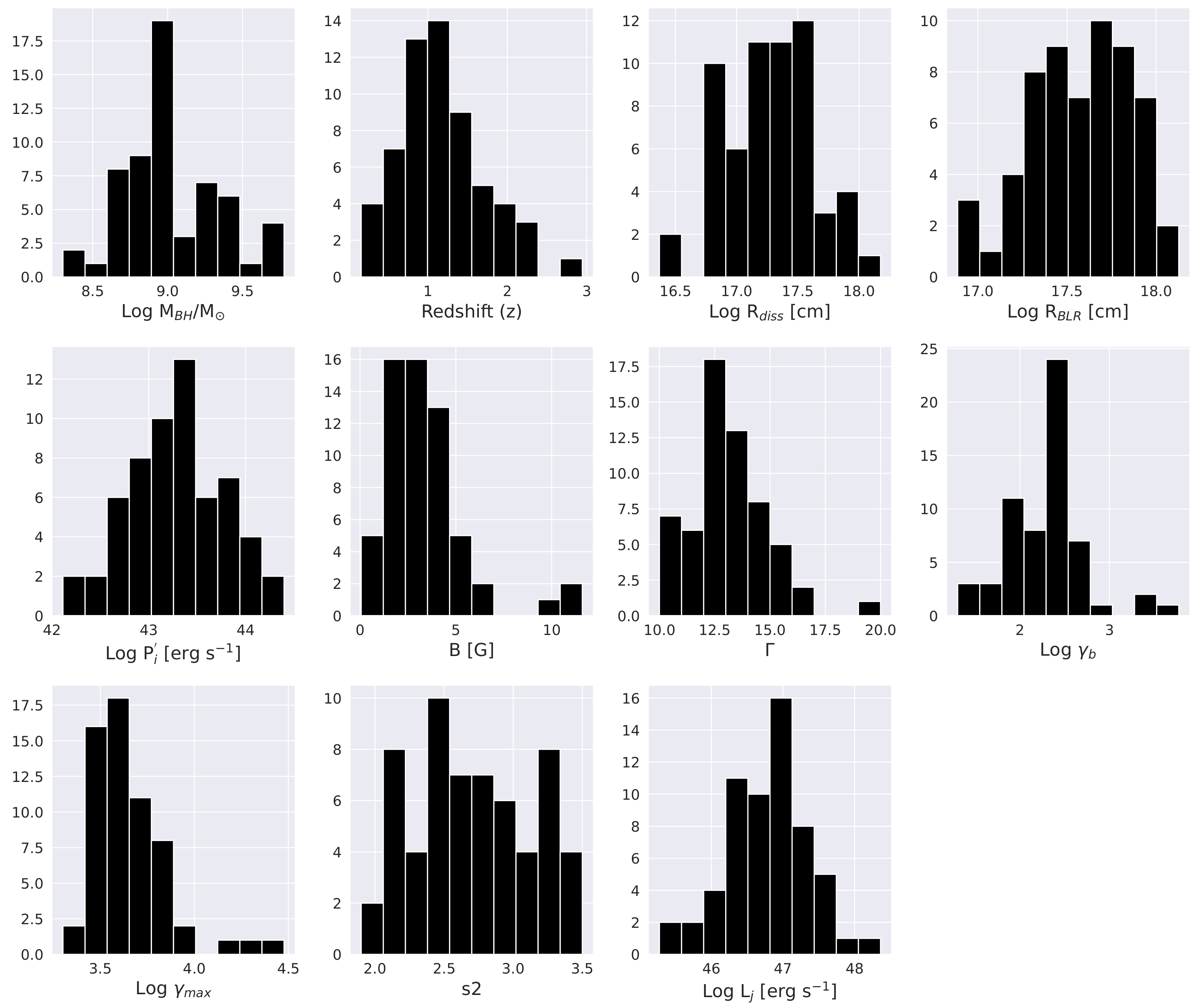
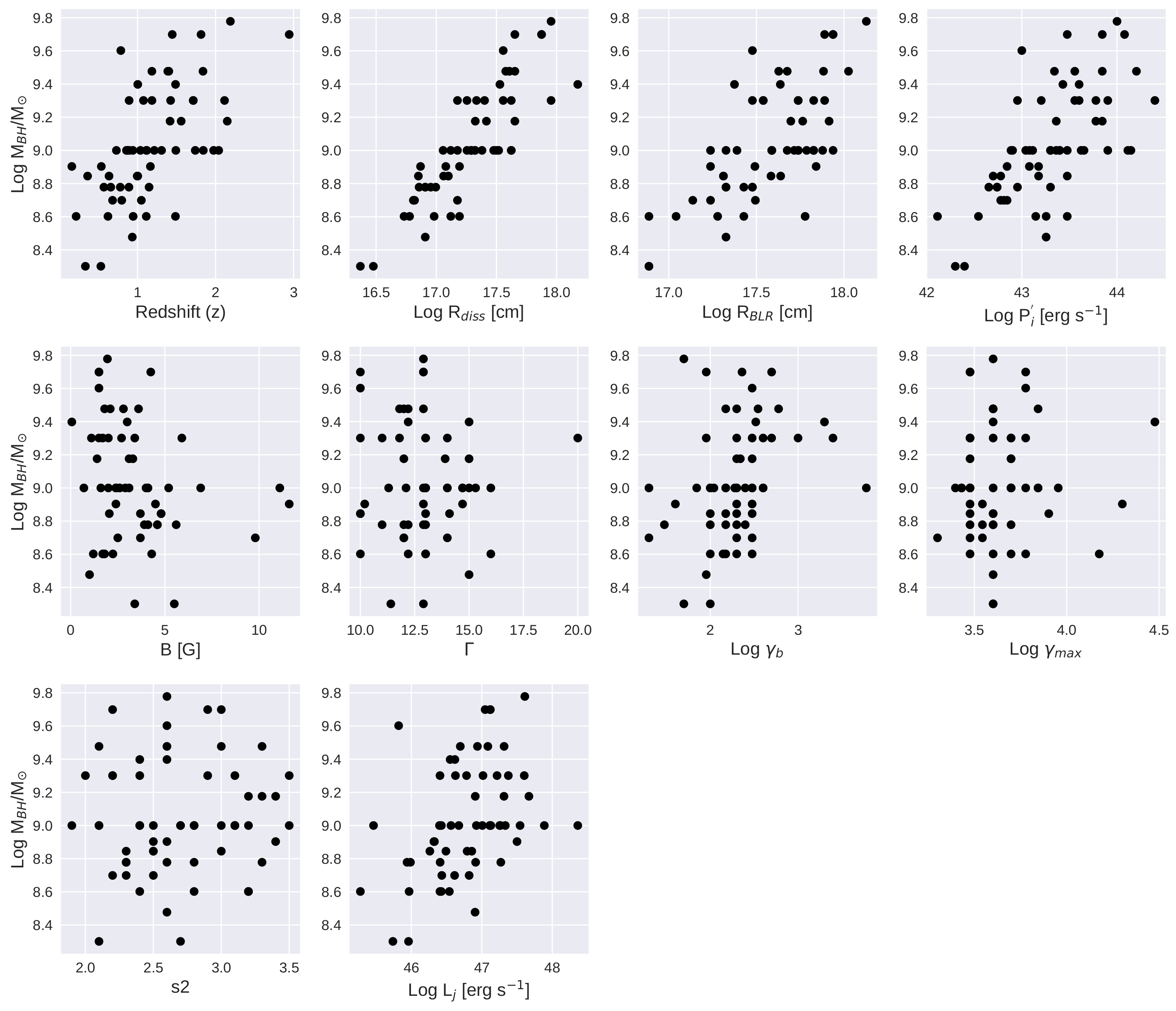
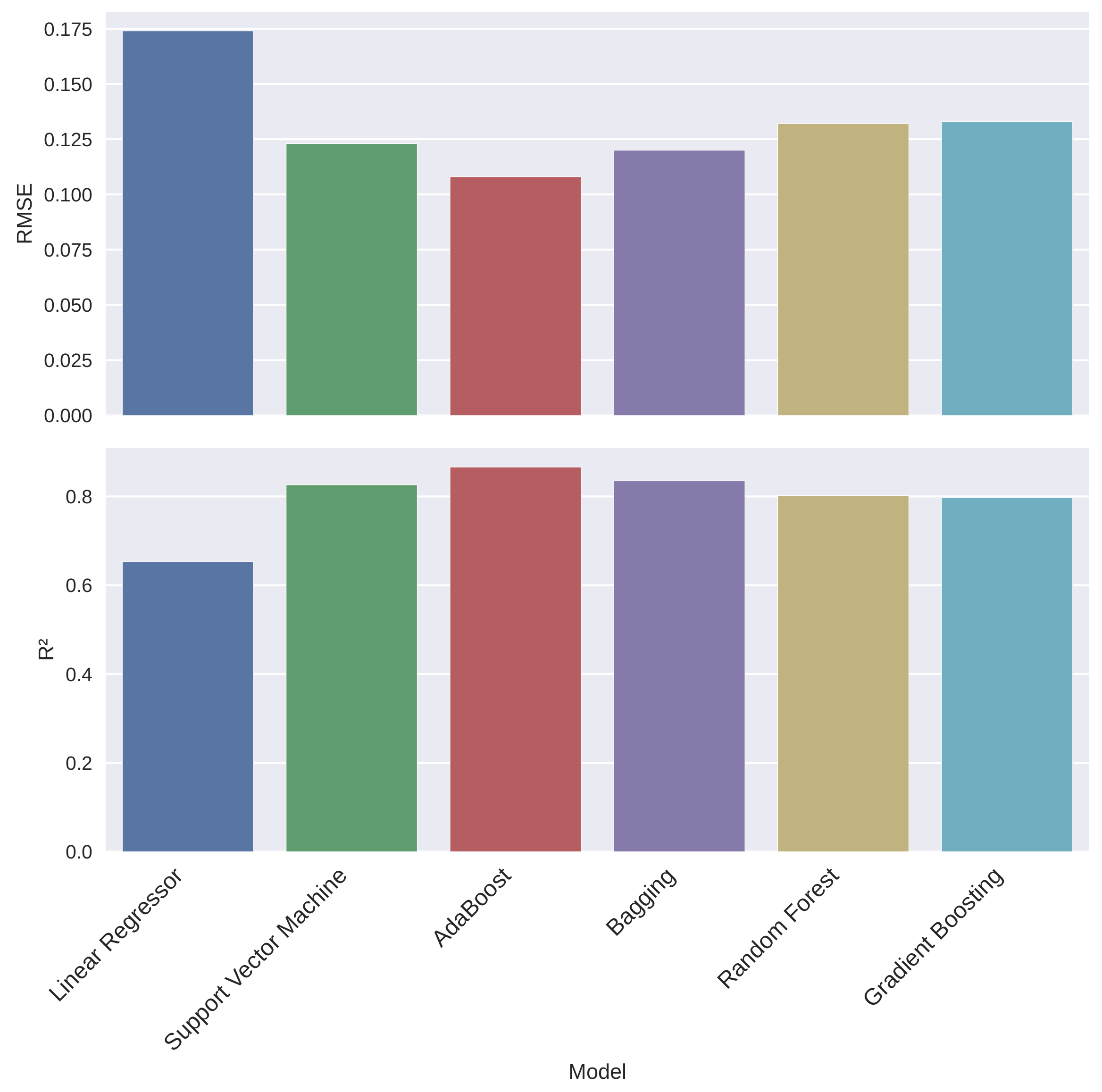
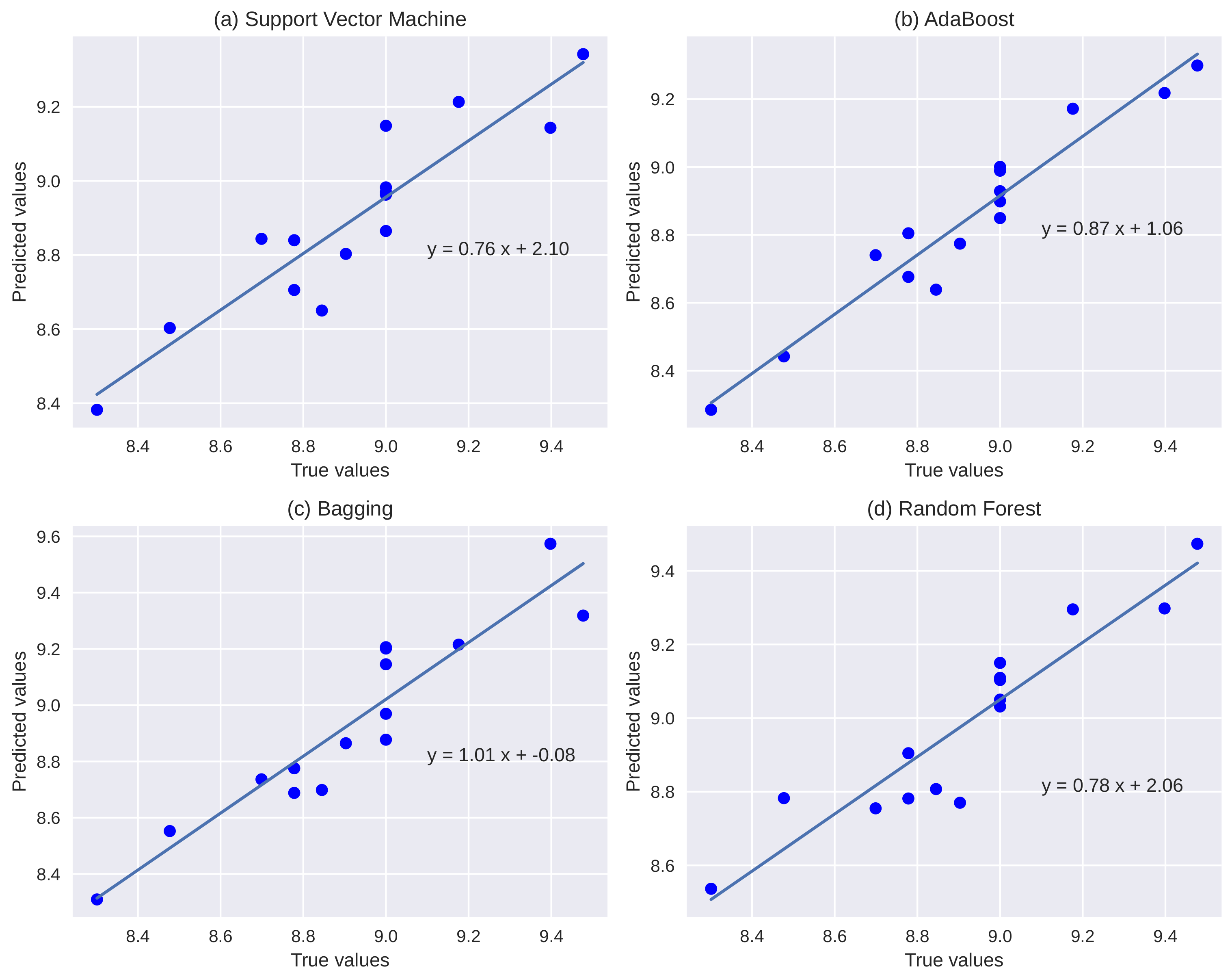
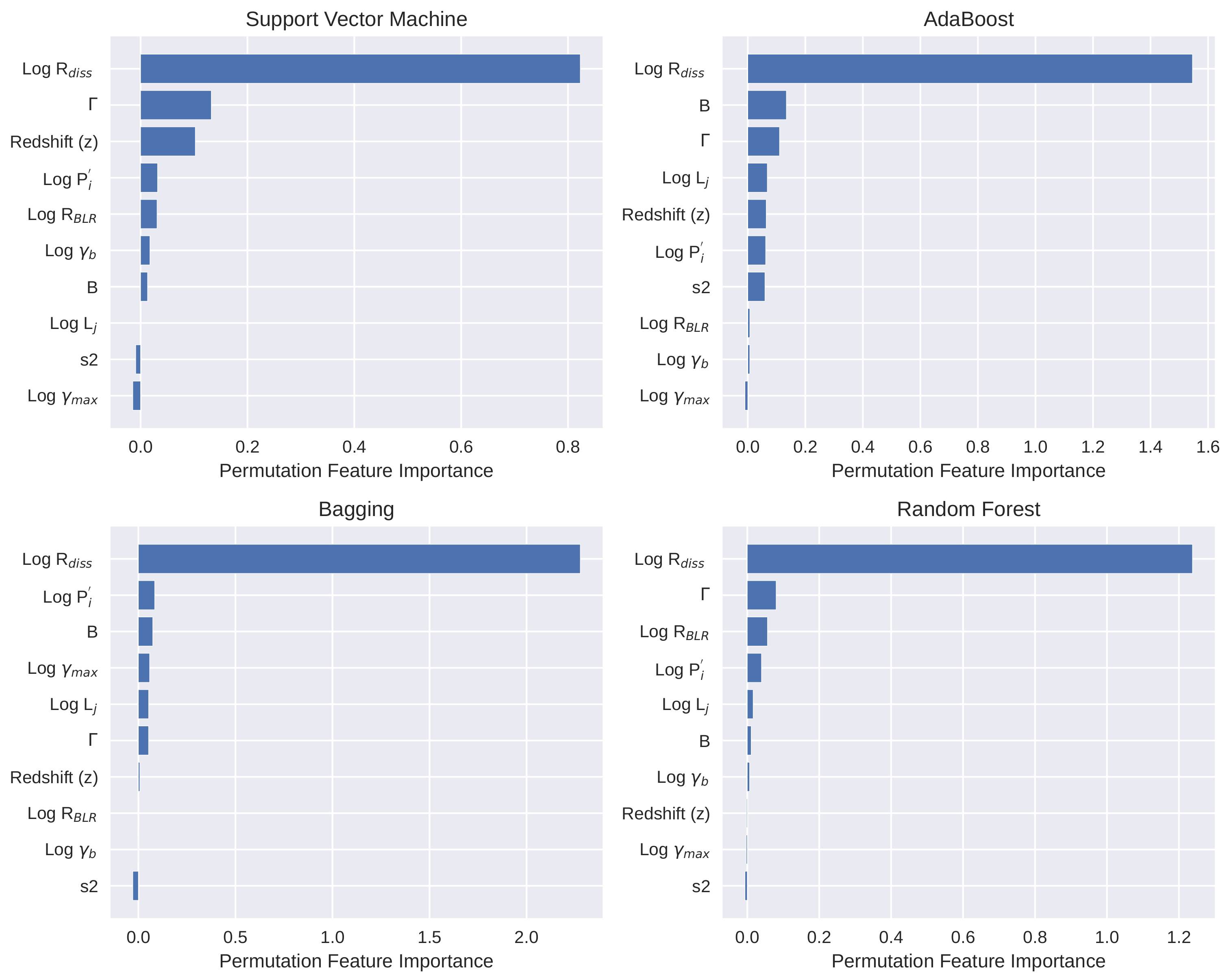
Publisher’s Note: MDPI stays neutral with regard to jurisdictional claims in published maps and institutional affiliations. |
© 2022 by the authors. Licensee MDPI, Basel, Switzerland. This article is an open access article distributed under the terms and conditions of the Creative Commons Attribution (CC BY) license (https://creativecommons.org/licenses/by/4.0/).
Share and Cite
Singh, K.K.; Tolamatti, A.; Godiyal, S.; Pathania, A.; Yadav, K.K. A Machine Learning Approach for Predicting Black Hole Mass in Blazars Using Broadband Emission Model Parameters. Universe 2022, 8, 539. https://doi.org/10.3390/universe8100539
Singh KK, Tolamatti A, Godiyal S, Pathania A, Yadav KK. A Machine Learning Approach for Predicting Black Hole Mass in Blazars Using Broadband Emission Model Parameters. Universe. 2022; 8(10):539. https://doi.org/10.3390/universe8100539
Chicago/Turabian StyleSingh, Krishna Kumar, Anilkumar Tolamatti, Sandeep Godiyal, Atul Pathania, and Kuldeep Kumar Yadav. 2022. "A Machine Learning Approach for Predicting Black Hole Mass in Blazars Using Broadband Emission Model Parameters" Universe 8, no. 10: 539. https://doi.org/10.3390/universe8100539
APA StyleSingh, K. K., Tolamatti, A., Godiyal, S., Pathania, A., & Yadav, K. K. (2022). A Machine Learning Approach for Predicting Black Hole Mass in Blazars Using Broadband Emission Model Parameters. Universe, 8(10), 539. https://doi.org/10.3390/universe8100539







